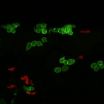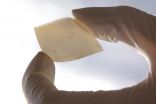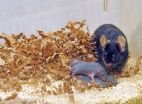(Press-News.org) ASCO Perspective: Gary Schwartz, MD, ASCO Expert "This study adds to the growing discussion around food and cancer risk. While the findings are intriguing, it's far too soon to recommend any broad changes to grapefruit or orange consumption. Until conclusive data are available, we should continue to be cautious about protecting our skin from sun exposure."
A new analysis of dietary patterns among more than 100,000 Americans suggests that frequent consumption of citrus -- namely whole grapefruit and orange juice -- may be associated with an increased risk of melanoma. Melanoma risk was 36% higher in people who consumed citrus fruit or juice at least 1.6 times daily compared to those who consumed them less than twice per week.
Consumption of grapefruit and oranges was not associated with an increased risk for any other non-skin cancers. This analysis, along with an accompanying editorial, "Dietary Advice for Melanoma: Not Ready for Prime Time," was published online today in the Journal of Clinical Oncology.
The study researchers argue that the apparent link between melanoma and citrus fruit consumption may be due to high levels of substances called furocoumarins found in citrus fruits. Prior research showed that furocoumarins make the skin more sensitive to sunlight, including to melanoma-causing ultraviolet (UV) rays.
"While our findings suggest that people who consume large amounts of whole grapefruit or orange juice may be at increased risk for melanoma, we need much more research before any concrete recommendations can be made," said lead study author Shaowei Wu, PhD, a postdoctoral research fellow at the Department of Dermatology, the Warren Alpert Medical School of Brown University in Providence, Rhode Island. "At this time, we don't advise that people cut back on citrus -- but those who consume a lot of grapefruit and/or orange juice should be particularly careful to avoid prolonged sun exposure."
The analysis included data on 63,810 women in the Nurses' Health Study (1984 - 2010) and 41,622 men in the Health Professionals Follow-Up Study (1986 - 2010). Questionnaires were mailed at various intervals to assess dietary intake (at least every four years) and collect information on medical history and lifestyle factors (every two years). For the purposes of the survey, a serving of citrus fruit was defined as the equivalent of half of a grapefruit, one orange, or a small (6 oz) glass of grapefruit or orange juice. People with a history of cancer were excluded from the analysis.
Over a follow-up period of up to 26 years, 1,840 (1.7%) study participants were diagnosed with melanoma. Higher overall citrus fruit consumption (the total number of servings of whole grapefruit, whole oranges, and juices from those fruits) was associated with increased risk of malignant melanoma in both men and women. The association was strongest for grapefruit, followed by orange juice. Conversely, and interestingly, consuming either grapefruit juice or whole oranges was not associated with melanoma risk.
Furthermore, the association between eating whole grapefruit and melanoma was independent of age and lifestyle factors, such as physical activity, cigarette smoking, alcohol and coffee intake, and use of vitamin C supplements. However, the association was more apparent among those who were more susceptible to sunburn as a child or adolescent and those who spent more time in direct sunlight.
The authors speculate that the levels of furocoumarins may be higher in whole fruit than in processed juices. They suspect that the significant effect of orange juice on melanoma risk can be explained by its consumption level, which was several times higher than any other citrus product. There was no significant association between other furocoumarin-rich foods, such as carrots and celery, and melanoma risk. "People often cook these vegetables, and heat treatment reduces the amount of furocoumarins in food," said Dr. Wu. Further research into furocoumarin levels in citrus fruit and juice and participants' blood samples is planned to confirm these hypotheses.
According to the authors, this is the first large study to investigate the link between dietary furocoumarin and melanoma risk. Prior research has shown that tanning lotions containing psoralens (a group of naturally occurring furocoumarins) increase the risk for melanoma. Long-term use of oral psoralen as part of therapy for severe psoriasis can also increase risk of melanoma.
In an accompanying editorial, Marianne Berwick, PhD, MPH, professor of the Department of Internal Medicine and Dermatology at the University of New Mexico, acknowledges that this study was quite large and data were collected prospectively. However, she identified several important limitations of the study worth noting. This includes a study population of health professionals, which is not representative of the general population.
According to Dr. Berwick, this is a potentially important study because citrus consumption is widely promoted as an important part of the diet. Citrus has demonstrated benefit for coronary heart disease, cancer prevention, and overall health effects. "At this point in time, a public overreaction leading to avoidance of citrus products is to be avoided," said Dr. Berwick. "For people who would be considered at high risk, the best course might be to advise individuals to use multiple sources of fruit and juice in the diet and to use sun protection, particularly if one is sun sensitive. There is clearly a need for replication of the study findings in a different population prior to modifying current dietary advice to the public."
INFORMATION:
This research was supported by the U.S. National Cancer Institute, National Institutes of Health.
The Journal of Clinical Oncology is the tri-monthly peer-reviewed journal of the American Society of Clinical Oncology (ASCO), the world's leading professional society representing physicians who treat people with cancer.
ATTRIBUTION TO THE JOURNAL OF CLINICAL ONCOLOGY IS REQUESTED IN ALL NEWS COVERAGE.
July 1 -- Researchers in the United Kingdom and Denmark have studied the "see-through" larvae of zebrafish to reveal how wound healing leads to skin cancer. Live imaging shows neutrophils, the protective inflammatory cells of the body's immune system, diverted from an induced wound to any nearby precancerous skin cells. The newly arrived neutrophils cause rapid division of these skin cells, which may cause them to progress to melanoma. The results are published in The EMBO Journal.
"Our results provide direct visual evidence of a physical link between wound-associated ...
Scientists from the University of Leeds and The Institute of Cancer Research, London, have discovered a new protein which triggers the growth of blood vessels in breast cancer tumours which have spread to the brain, a common location which breast cancer can spread to.
Dr Georgia Mavria's team in the School of Medicine at Leeds found that by withholding the DOCK4 protein in mouse models, a particular part of the blood vessel did not form as quickly, meaning tumours grew at a slower rate.
Dr Mavria said: "We want to understand how these tumours form and grow, but we still ...
Storing solar energy as hydrogen is a promising way for developing comprehensive renewable energy systems. To accomplish this, traditional solar panels can be used to generate an electrical current that splits water molecules into oxygen and hydrogen, the latter being considered a form of solar fuel. However, the cost of producing efficient solar panels makes water-splitting technologies too expensive to commercialize. EPFL scientists have now developed a simple, unconventional method to fabricate high-quality, efficient solar panels for direct solar hydrogen production ...
Nine times more job offers after training
Eases anxiety and boosts rapport with interviewer
High unemployment for vets with PTSD and mentally ill
CHICAGO --- Finding a job is difficult for veterans with posttraumatic stress disorder (PTSD) and individuals with severe mental illness, who have high unemployment rates even though many want to work.
The job interview -- especially hard for those with mental illness -- can be a major hurdle.
A virtual human -- based on software originally used to train FBI agents -- helped vets with PTSD and individuals with severe ...
This news release is available in French.
Regular, structured extracurricular sports seem to help kids develop the discipline they need in order to engage effectively in the classroom, according to a new study led by Linda Pagani of the University of Montreal and its affiliated CHU Sainte-Justine children's hospital. "We worked with information provided by parents and teachers to compare kindergarteners' activities with their classroom engagement as they grew up," Pagani said. "By time they reached the fourth grade, kids who played structured sports were identifiably ...
COLUMBUS, Ohio - Seven out of 10 college students feel stressed about their personal finances, according to a new national survey.
Nearly 60 percent said they worry about having enough money to pay for school, while half are concerned about paying their monthly expenses.
The findings suggest that the pressures of student loan debt and finding ways to make ends meet are weighing on America's college students, said Anne McDaniel, co-author of the study.
In fact, 32 percent of students reported neglecting their studies at least sometimes because of the money they owed.
"The ...
A new Cochrane systematic review published today of surgery for stress urinary incontinence makes an important contribution to an ongoing debate and will help women to make more informed choices about treatment. Inserting a 'mid-urethral sling', a type of tape, to support the muscles of the bladder by either the groin or abdomen results in similar cure rates. However, differences in complications and the long term need for repeat surgery mean that women will need to balance a number of different factors when choosing an operation.
Stress urinary incontinence (SUI) is ...
BLOOMINGTON, Ind.--A new study from Indiana University provides evidence in mice that males may play a positive role in the development of offspring's brains starting before pregnancy.
The research, reported July 30 in the Proceedings of the Royal Society of London B: Biological Sciences, found that female mice exposed to male pheromones gave birth to infants with greater mental ability.
"This is the first study to show that pheromone exposure exerts an influence across generations in mammals," said Sachiko Koyama, an associate research scientist at the IU Bloomington ...
DARIEN, IL - A new study suggests that there may be a reciprocal, causal pathway between job strain and disturbed sleep, implying that interventions to treat sleep problems may improve work satisfaction.
Results show that higher work demands predicted subsequent sleep disturbances at the two-year follow-up. Similarly, sleep disturbances predicted a higher perception of stress, higher work demands, a lower degree of control, and less social support at work two years later. No relationship was found between disturbed sleep and physical work environment, shift work schedules ...
An international research team led by the University of Colorado Boulder and the University of Witwatersrand in Johannesburg, South Africa has discovered a milk-and ochre-based paint dating to 49,000 years ago that inhabitants may have used to adorn themselves with or to decorate stone or wooden slabs.
While the use of ochre by early humans dates to at least 250,000 years ago in Europe and Africa, this is the first time a paint containing ochre and milk has ever been found in association with early humans in South Africa, said Paola Villa, a curator at the University ...



